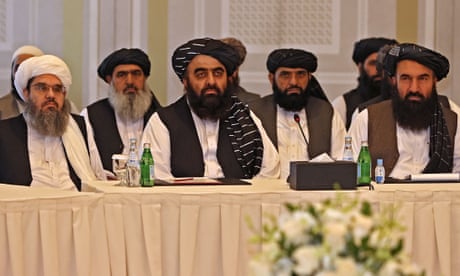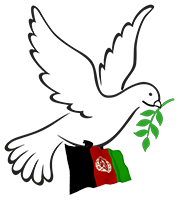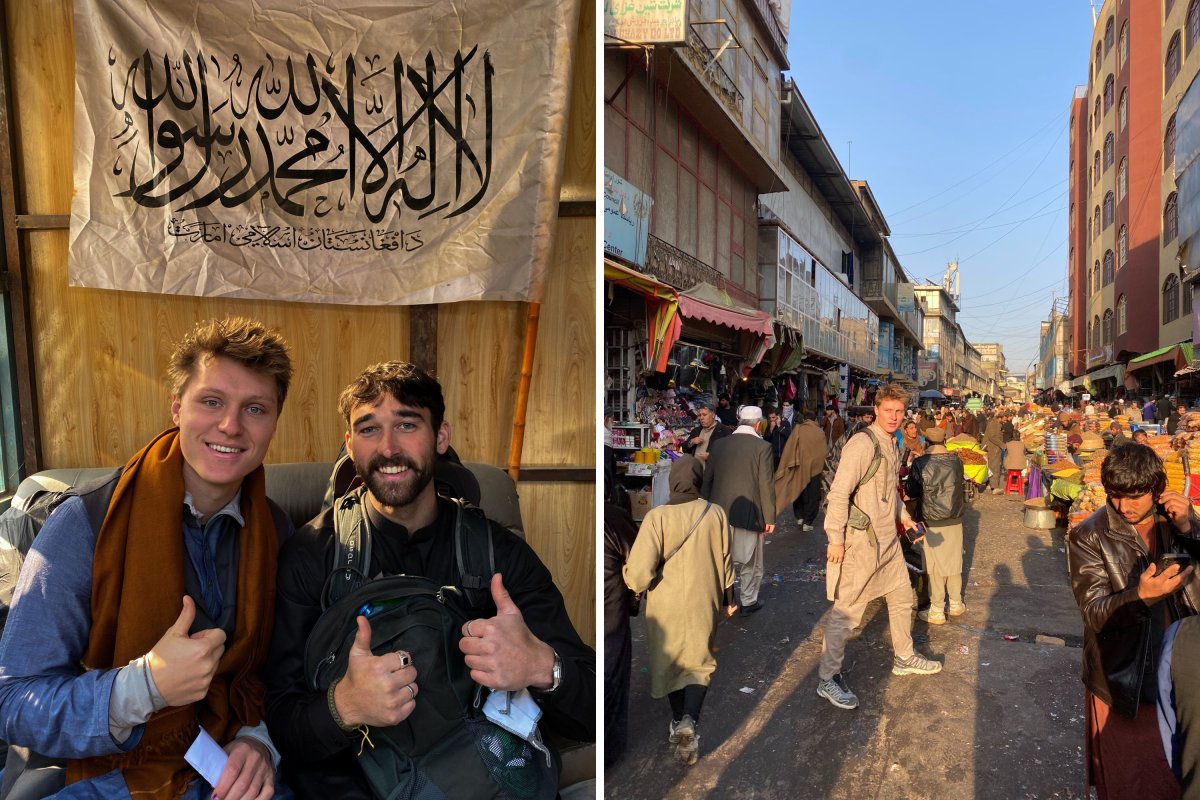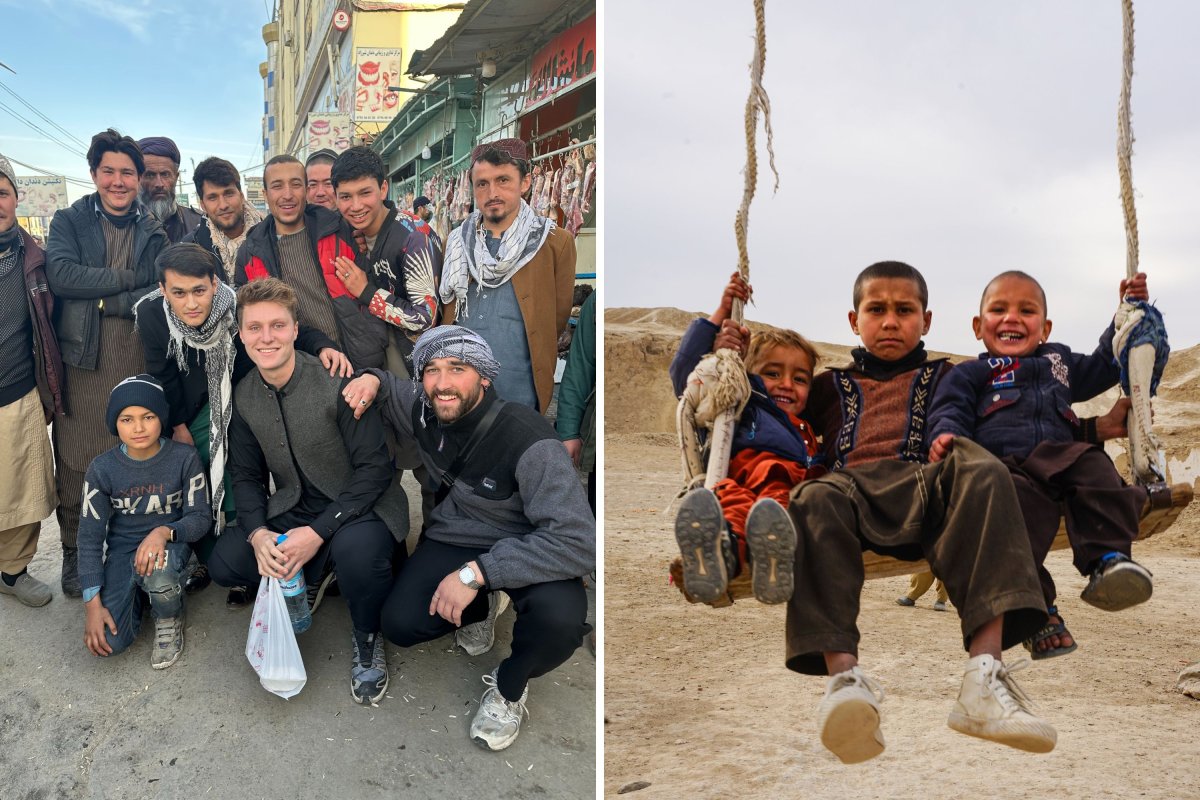“They tried to silence me,” Khalida Popal says with unflinching clarity as she remembers the moment when, in 2011, she knew she had to leave Afghanistan for ever. As the co-founder of the national women’s football team, and their first captain who had since become the unlikely head of finance at the otherwise all-male Afghanistan federation, Popal’s outspoken defiance made her a target for assassination.
“I faced many challenges, like death threats,” she continues on a mild afternoon in London. “I was always followed and threatened. There was a moment where I saw a gunman coming towards the car I was in so I am thankful for the traffic in Kabul. Usually I was frustrated by the traffic, but that time it saved my life as I managed to jump out of the car and run as fast as I could and hide myself.
“I was lucky I survived. The situation got worse and the police wanted to arrest me. There was so much danger towards me and my family. I put them in a really horrible situation because it’s so dangerous provoking people in an Islamic country. It won’t take long to be stoned or shot. I was accused of being against Islam and wanting to brainwash women to play football.”
Popal was forced into exile and, after a desolate time in refugee centres, she is now a stateless citizen who lives in Denmark. Her gripping and moving new book, written with Suzanne Wrack of the Guardian, also shows how Popal exposed systemic sexual abuse of women in the national team and eventually helped more than 500 people to escape the Taliban and find refuge in different countries. She continues to support many young female Afghan footballers while lambasting Fifa’s failure to offer them recognition or support.
Long before a despairing teammate doused herself in petrol and struck a match when she was barred from playing football, and prior to the Taliban’s return to
Afghanistan, the game carried a pure meaning for Popal. “Football was freedom in a society where there is so much pressure and you are judged just because of your gender,” she says. “The only place you feel freedom is the pitch. The minute the ball starts rolling you can express yourself, scream and yell and laugh.”
Popal is often described as being fearless in standing up to repression, but she shakes her head. “I was scared,” she says. “I was in shock most of the time. I would receive a phone call from a man saying: ‘I will rape you.’ I was looking around, feeling someone is just behind me, and most of the time I could not tell my parents because I was too scared that their love and protection will stop my work. I was lonely, frustrated, sad and broken. Most nights I was crying into the pillow until I fell asleep.”
Unlike her teammates, Popal was bolstered by parents who encouraged her to speak out and be her true self. “There are many stories of the cost our players paid for playing football,” she says. “One of our teammates was a goalkeeper who had great talent. She was beautiful, amazing, very athletic, and grew up as a refugee in Italy where she learnt football. She came home to Afghanistan and her family was strict. She was playing with us secretly. When the family found out they stopped her.
“So my mum, myself and some other girls went to see her family. We were 15 or 16 so we needed my mum, a respected PE teacher, to lead the conversation with her parents. She said to them: ‘If football was something bad, I wouldn’t let my daughter play. This is about sisterhood and these young women gaining self-confidence because they have talent.’ Our friend’s dad and brother got angry and kicked us out of the house and called us prostitutes.
“Then they took the right away from our friend to go to school and play football. She was imprisoned at home and lost her freedom because her only happiness was school and football. She was forced to get married and so she set herself on fire and burned [to death].”
Despite the trauma, Popal intensified her efforts and a few years later she led the first national women’s team from Afghanistan at a tournament in Pakistan. “That’s one of the most beautiful, amazing moments in our lives,” Popal says, her eyes shining. “When everybody says you’re not worth anything, and you will fail, there is so much pressure. After all our struggles as women, when the national anthem played that’s the most beautiful thing that happened to us. Representing our country when we were told we belonged to the kitchen, that we are whores, was a great achievement. I never played in a World Cup but, to me, that moment felt like winning the World Cup.”
Popal eventually found herself in a position of limited power, developing women’s football, in the national federation. But Keramuudin Karim, the president of the federation, tried to control Popal. Years later she worked with Wrack and the Guardian to reveal how much sexual abuse of players on the national team occurred under Karim’s watch.
The Taliban regained control of Afghanistan in 2021 and Popal was thrust into even darker terrain. She looks stricken again. “The return of the Taliban came as a shock. I don’t know if we were naive but we trusted the western world which said it will not let the women of Afghanistan face the dark time again. That was the wrong trust.”
Popal was besieged by messages from desperate women begging her to help them escape Afghanistan. “It was never our job, as individuals, to evacuate people. But when the Taliban took over the first thing that came in my mind was: ‘What will happen to our girls? The enemy is out there and they have no protection.’ I was so stressed about the men in the neighbourhood who were against our players’ activism. There was a great risk they will expose to the Taliban what’s happened in the past.
“I remember sitting on the floor of the apartment in Denmark thinking: ‘I have no power.’ And I felt again the guilt because I was the reason they all came to football. And this is how it will finish. They will all get killed. But I’m happy that every time I was about to give up a voice inside said: ‘I do have power as an individual. I can still raise my voice.’ I reached out to people, wrote to them and then groups came together to lobby governments and in a week we managed to get the team out.
“It is now more than 500 [people that Popal has helped to escape Afghanistan]. The first group was 80-something and included the senior women’s national team that is now supported by the government of Australia – where they got evacuated. The youth teams have come to the UK and other European countries, and some went to the US and Canada. Then the families continued coming.”
Popal and her supporters were accused of making “false” claims in the initial evacuation. The BBC alleged that 13 of the female evacuees were not involved with the national or regional teams listed in the documentation. She grimaces now in response: “What was so painful for me was the way a news agency would put my role as someone who played God and said I was the one to pick and choose – ‘You deserve to be alive and you deserve to die.’ I never had that role. I could have just written a post saying: ‘I feel sorry for the women of my country.’ But I went beyond that, even if it’s so risky to do something you have never trained to do. I’ve never trained to evacuate. I’ve never trained how to talk on the phone with a young woman about to kill herself.”
Popal looks at me intently. “I did that during the evacuation because one of our players was too scared. She got a panic attack. When she phoned me on a video call, she had the gun in her hand and I could see it. It was so scary. I couldn’t breathe, seeing what she is trying to do. She said: ‘I’m just sitting by the window and looking outside. The minute the Taliban is on our street, searching houses, I will take my life before they take mine.’
“How do you support someone [in this situation]? I am not a psychologist. I’ve never been trained to tell someone: ‘Don’t do it, don’t give up.’ I don’t care if they played for the national team or what titles they had. All I wanted to do was to get as many women out of the country as possible.”
Did that particular woman escape Afghanistan? “Yes,” Popal exclaims in delight. “Nilab [Mohammadi] is in Australia. She is scoring goals as a top footballer and she is also studying. We have had many conversation because I travel back and forward to Australia. I’m mentoring, supporting through my resources to get them in football, education and work – not only the national team but also our players in Europe and the UK.”
What is Fifa doing to help female footballers from Afghanistan? Popal shrugs. “We are very disappointed. I keep calling on Fifa but they kept ignoring us. They kept silencing us in so many ways. Fifa could do one thing best and that would be recognising this team in diaspora. But they are playing the ball towards the Afghanistan Football Federation, a federation controlled by the Taliban that do not allow women to go to school or get out of their house unaccompanied by a male family member. Where is this hope Fifa has that the Taliban will allow a [women’s] team to represent Afghanistan?”
A Fifa spokesperson said: “The selection of players and teams representing a member association is considered as an internal affair of the member association. Therefore, Fifa does not have the right to officially recognise any team unless it is first recognised by the concerned member association.
“However, ensuring access to football for both female and male players without discrimination and in safety is a key priority for Fifa. Fifa is therefore continuing to monitor the situation very closely and remains in close contact with the Afghan Football Federation and other stakeholders with the aim to promote access to football in Afghanistan. Fifa has also been supporting the evacuation of over 150 Afghan sports persons and human rights defenders at risk in November 2021 and continues its support for this group.”
Has Gianni Infantino, Fifa’s president, given any indication he might meet Popal or her colleagues? “Unfortunately not,” Popal says. “We have sent emails, complaints. I actually filled the form and complained that the Afghan women’s whole football department is vanished, which is against the statutes of Fifa. But our report was not answered. All the players in our men’s national team are not coming from Afghanistan. But they travel and represent Afghanistan. But with our women footballers Fifa is saying to the Taliban: ‘You can do whatever. We’ll support you.’ By staying silent, you support, right?”
She alleges that “when I was investigating the sexual abuse of our players I found the emails that was reported directly to Infantino and Fatma Samoura [Fifa’s first female secretary general]. And they ignored [the emails] and allowed that culture for years. Before us knowing, they knew that this is happening to our players, the sexual abuse and the rape. They knew in 2018 and we got to know in 2019. But they ignored that.”
Fifa disputes that its leadership ignored the allegations. In 2019 a Fifa spokeswoman told the Guardian: “In early 2018 Fifa was made aware of sexual abuse allegations and immediately began to investigate these serious matters in a way that would ensure, first and foremost, the safety and security of the victims and their families.”
The 37-year-old Popal feels “relief” that her story has finally been told in full in her book. “I always had a fear, like: ‘What if I get shot and my story will be untold?’”
Does she still feel in danger? “There is always risk because I am from Afghanistan and I speak out loud and criticise, and support many young women and girls. Of course there are people who are not happy and want to silence me.”
Popal’s smile is tangled as she admits: “One thing I am very bad at is taking care of myself. But I have found that what makes me happy is being around my girls. Now they are all flourishing in new societies. I’ve never been a mum but, honestly, I feel so good when I meet them in Australia, the UK and Germany. I see them fluently speaking new languages, passing exams, getting their driving licences. This is beautiful.”

 Afghanistan Peace Campaign
Afghanistan Peace Campaign


